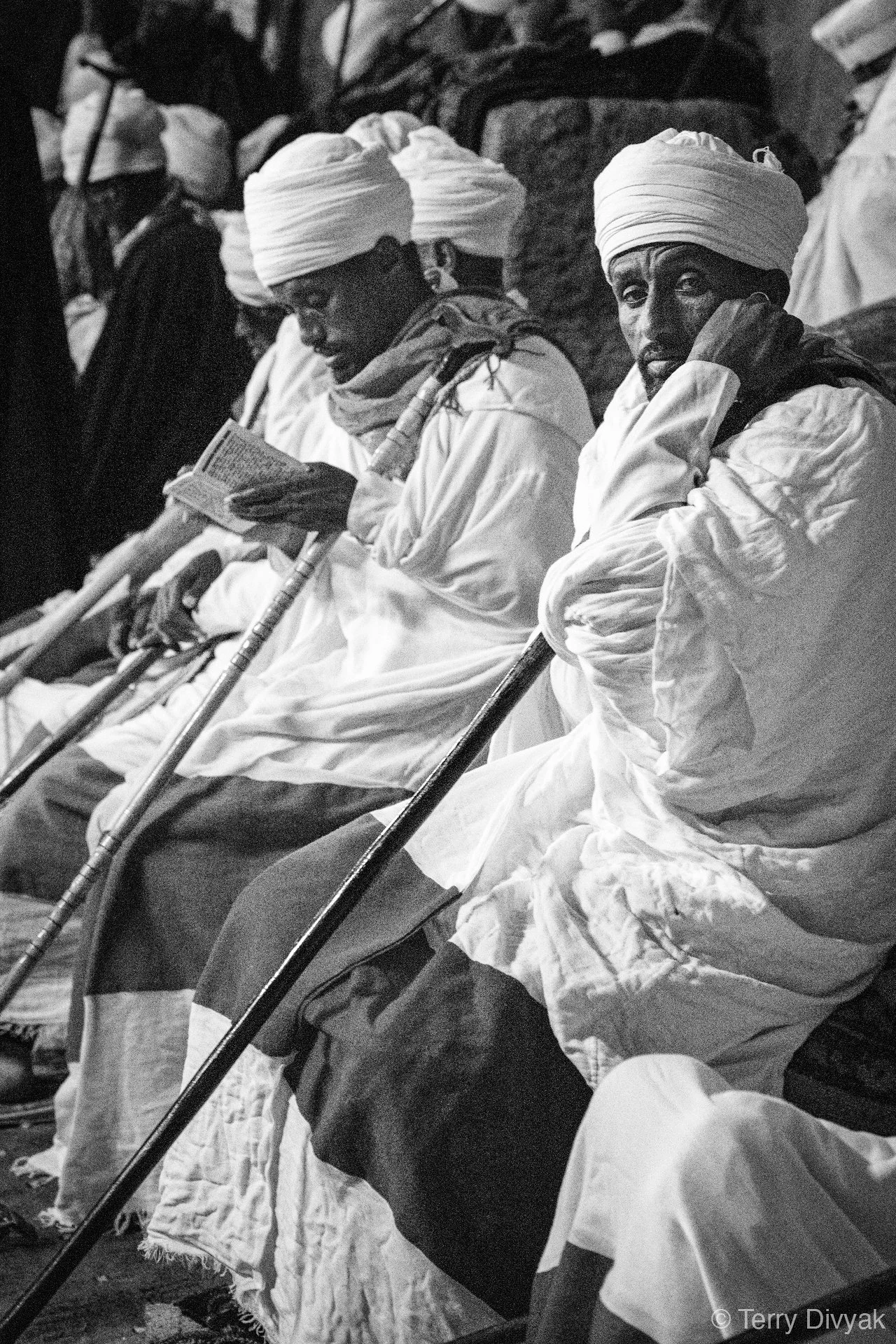Faces of Faith in Lalibela, Ethiopia
Lalibela is unlike any place I have been in the world, a sacred place of devotion and faith that has stood the test of time for over 800 years. The rock-hewn churches of Lalibela were built in the late 12th to early 13th century, during the reign of King Lalibela, who ruled Ethiopia during that time.
According to tradition, King Lalibela commissioned the churches as a symbolic "New Jerusalem" after Muslim conquests made pilgrimage to the Holy Land difficult for Ethiopian Christians. There are 11 monolithic churches, carved directly from solid volcanic rock, and they are still active places of worship today.
Though our visit lasted only three short days, we were able to gain a great understanding of the culture with the help of a local resident, tour guide, and Lalibela Deacon we met named Desta, also known as 'Happy.'" Happy let us know that there was a special event taking place in the first evening we would be there and he said that we could be front and center to the event, the Feast of Saint Aregawi. This important Orthodox Tewahedo Christian holy day honors Abune Aregawi, one of the nine founding saints of the Ethiopian Church, and is marked by a national pilgrimage.
I felt that black and white images better captured the timeless, ancient atmosphere of this unforgettable visit. These are just a few of the many photo opportunities I encountered while there.
Two men having a quiet conversation in a church in Lalibela, Ethiopia.
We spent most of the day going through the rock hewn hand carved churches and around every corner there was an opportunity to photograph a place and people were time just seemed to stand still. Men sat in quiet conversation or read from scriptures, sometimes centuries old, bound in worn leather covers. Though the image below shows what appears to be a newer book, the door next to him is probably 800 years old and the old chain slowly carved out grooves as it swung back and forth through the centuries.
Elder reading scriptures in Lalibela, Ethiopia.
In Lalibela, religion felt central to daily life, and I was struck by how the traditions of worship and ritual have continued almost unchanged and uninterrupted for over 800 years. It’s not just something practiced on special days but is a true lifeblood and focus of the community. While exploring the various churches, we were required to remove our shoes out of respect for the sacred spaces we were entering.
A gentleman in Lalibela kindly helped Linda with her shoes after we entered one of the churches.
I remember a gentleman who followed us around to ‘watch’ over our shoes and he took his role very seriously. It reminded me how, in many Western societies, we’ve lost a bit of that sense of reverence for sacred places. In contrast, removing one’s shoes is still a common practice in many Southeast Asian countries when entering temples or Wats, a simple part of showing respect.
Watch the video above for a look at the sights and sounds of a religious ceremony that we witnessed taking place in the Saint Maryam Rock Hewn Church in Lalibela, Ethiopia.
Finding a quiet place to read and reflect.
The architecture of the churches is quite stunning. If you look closely at some of the images in this post, you can see where the rock was expertly chiseled by hand. The sheer scale is impressive as shown in the photo of Linda and Destaw below.
Linda and Destaw in Lalibela.
Of course, my main focus was capturing the shots I had dreamed of before coming to Lalibela and with the backdrop of centuries-old churches, I wasn’t disappointed. Below are some of my favorite images, but don’t miss the ending. We attended the nighttime ceremony, and I’ve included the video above so you can hear the ancient songs and chants that have been passed down for centuries.
If you watched the video above, you’ll notice that we first observed the ceremony from above. But the most powerful experience came when, with the help of our guide Destaw, we were able to step onto the floor of the church and witness the ceremony up close. As a photographer, there are moments when you feel the need to put the camera down and simply be present and this was one of those times. Rather than keeping my lens at eye level, I wanted to soak in the atmosphere: the rhythm of the chanting, the echoes of the music, and the devotion filling the ancient stone walls. Below are some of my favorite images from that evening, captured as we stood among the worshippers on the ground level.




















